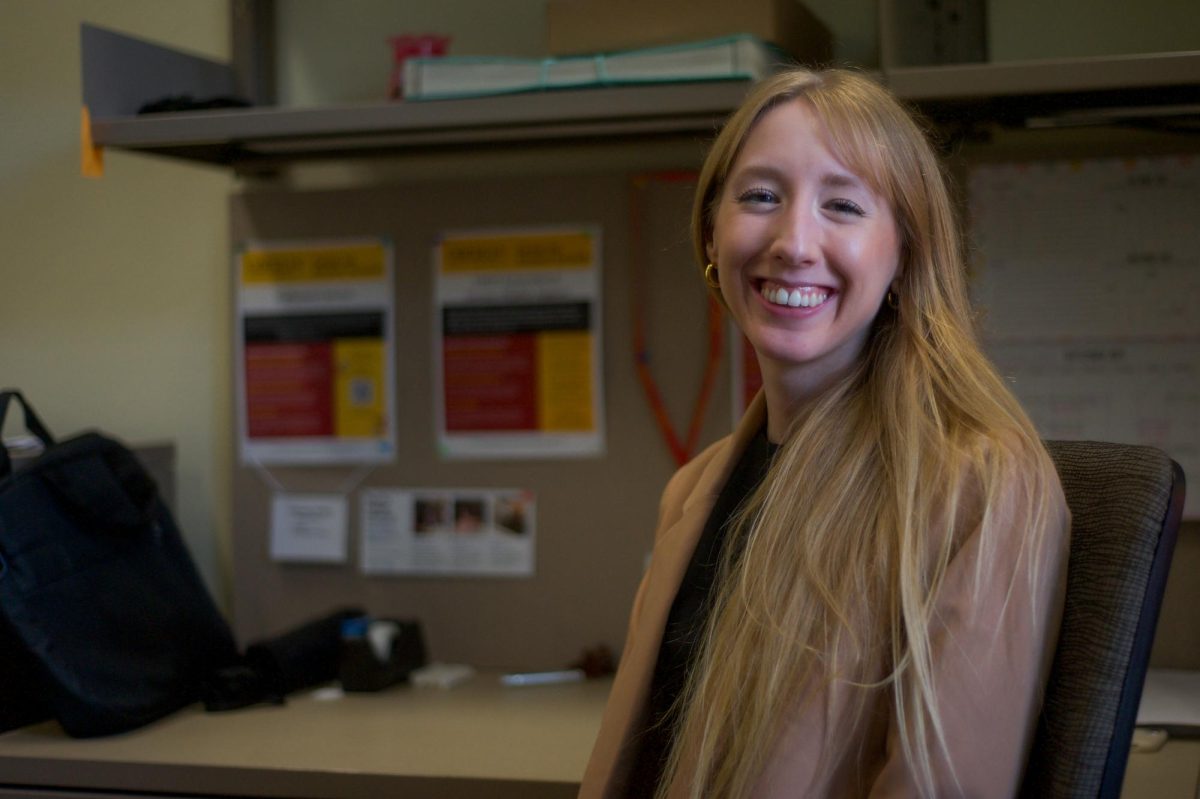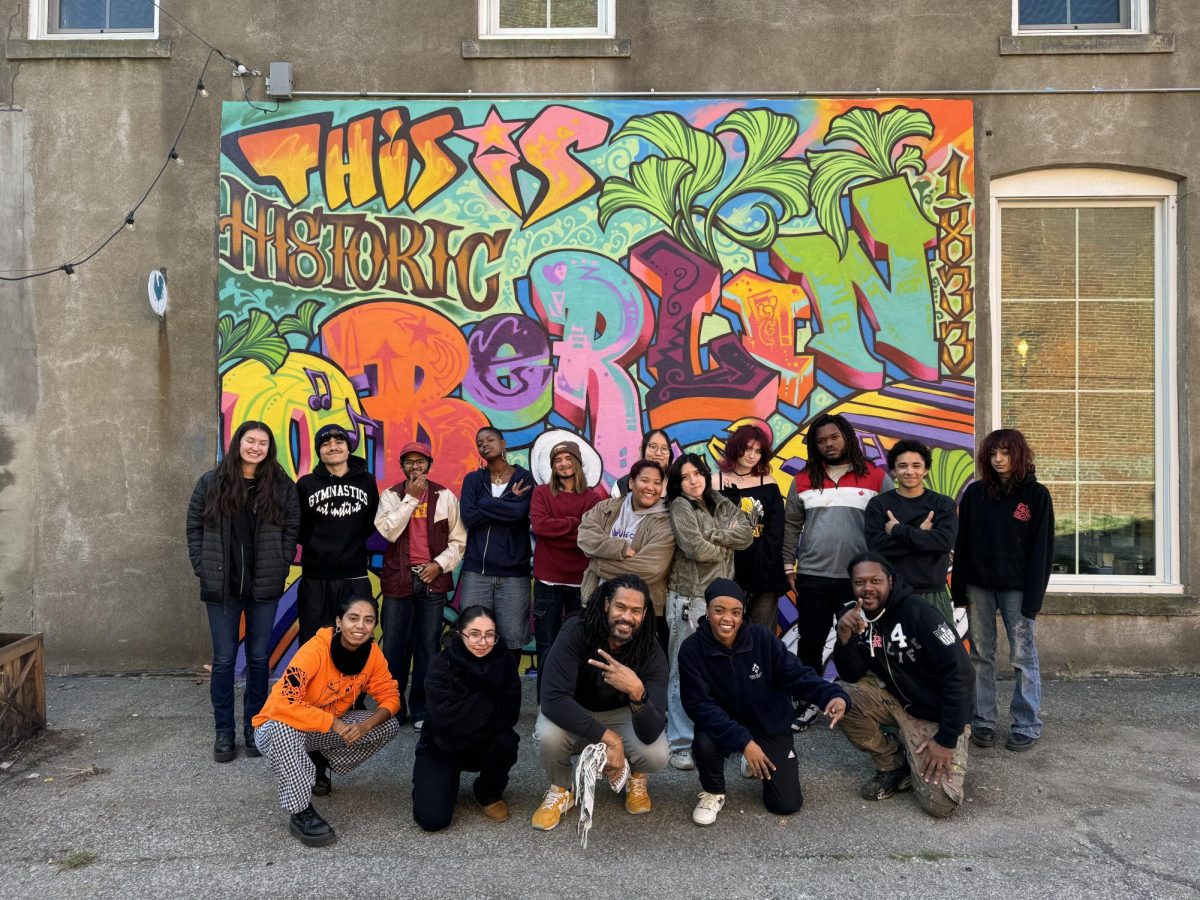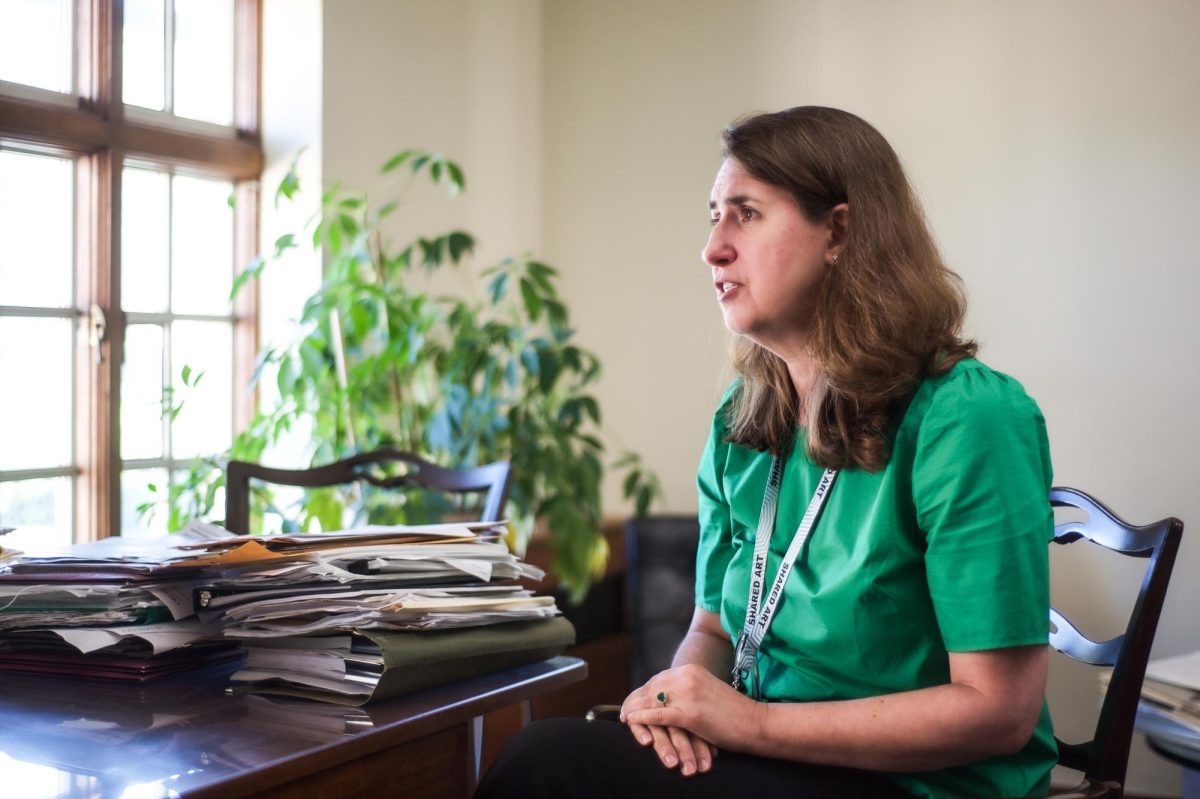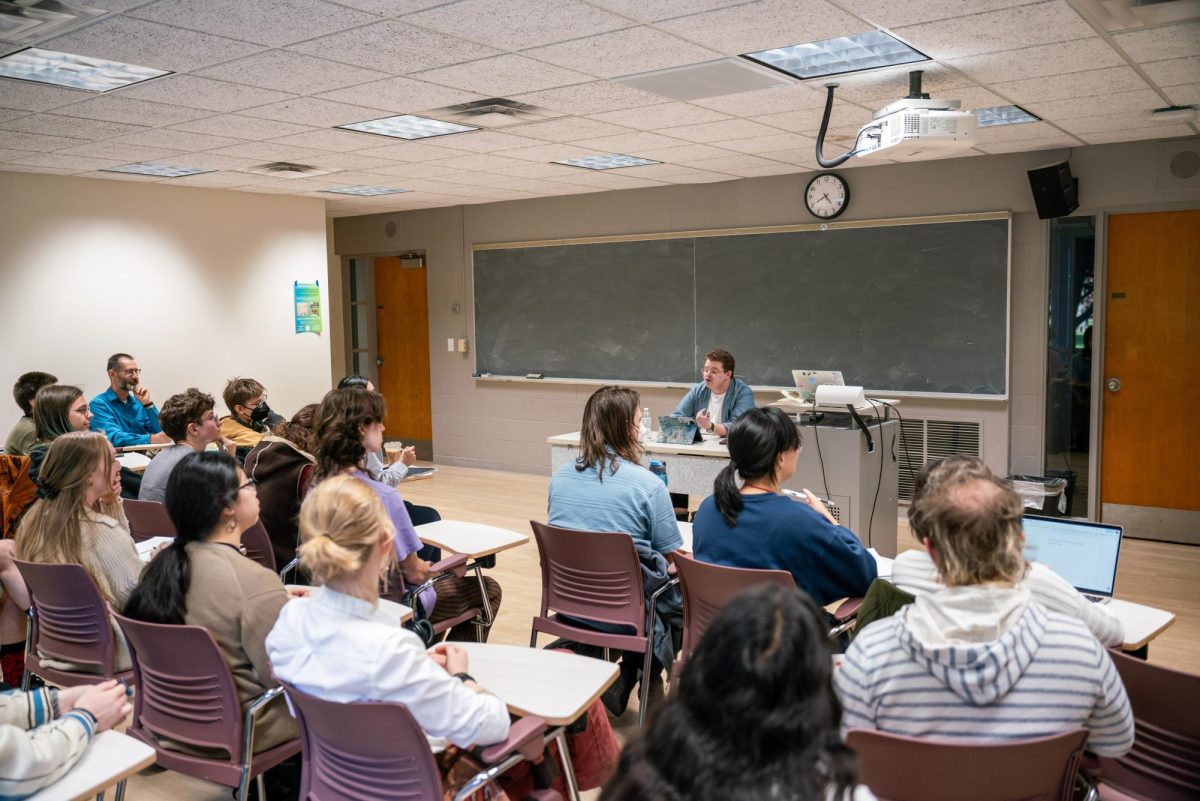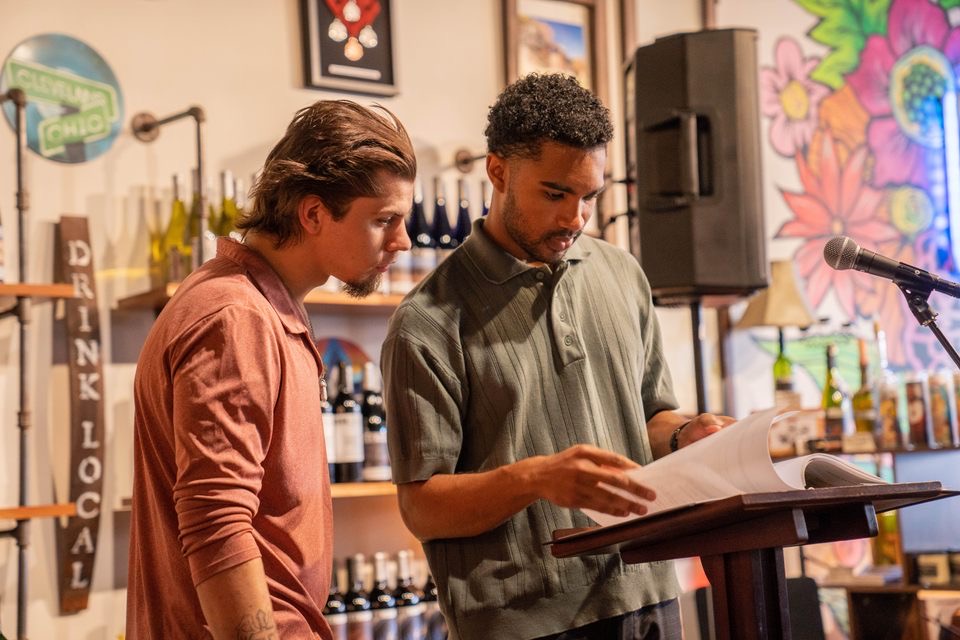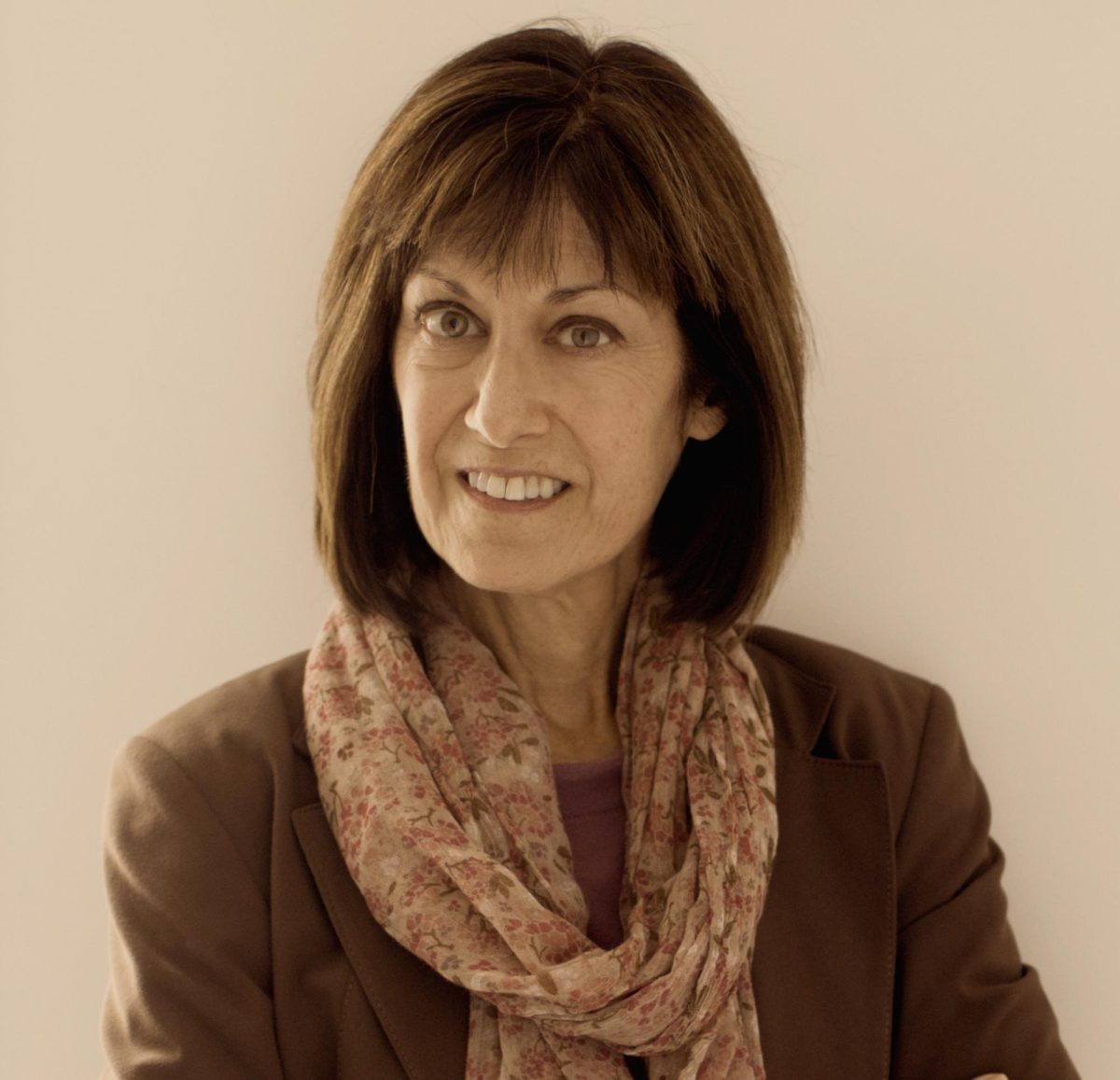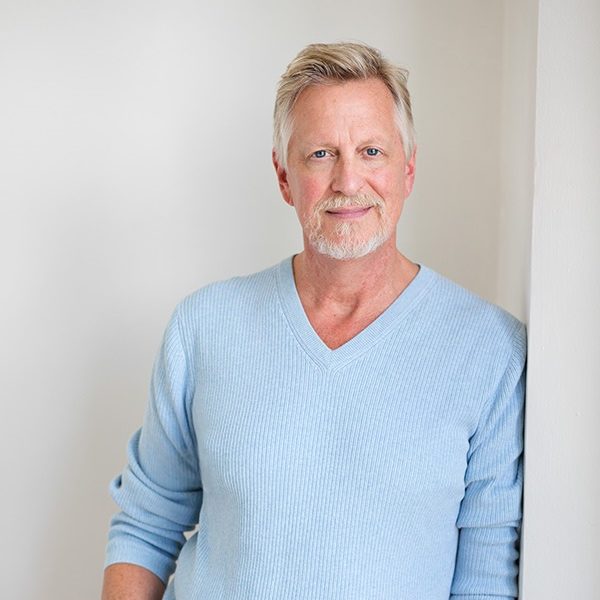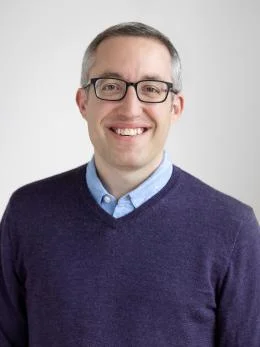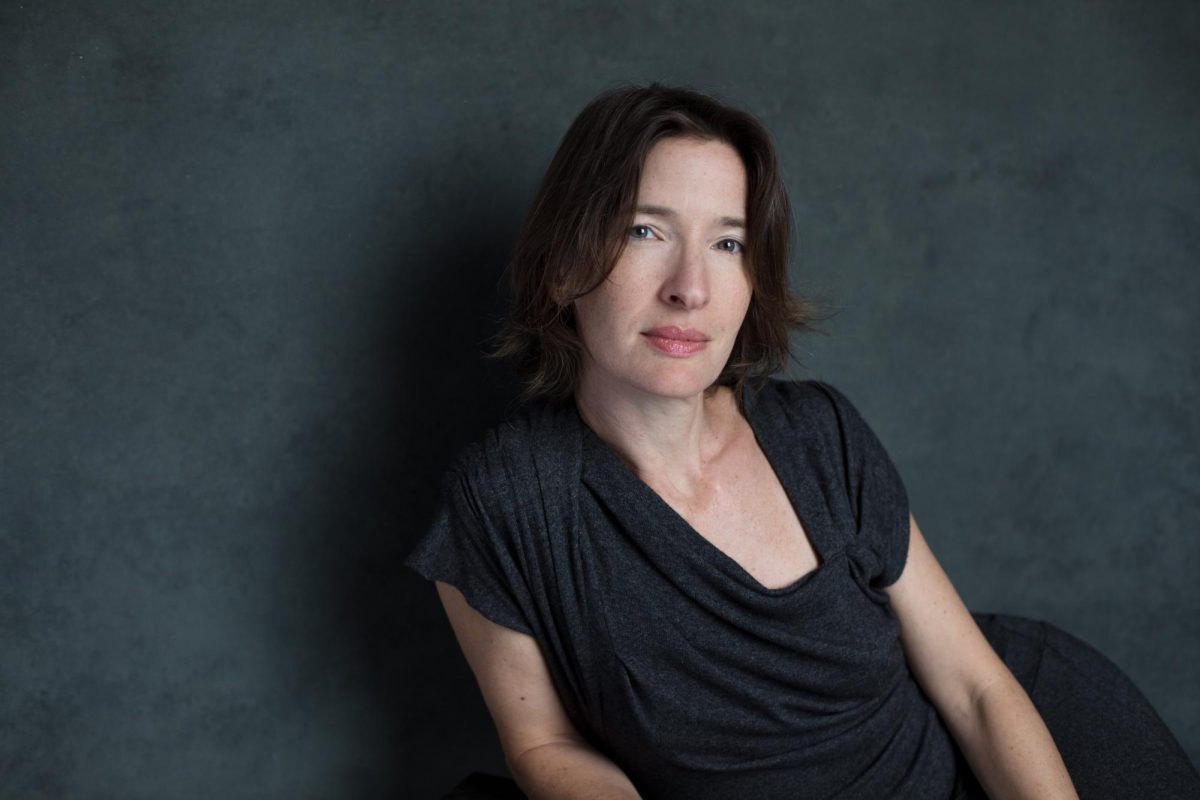Amanda Hodes is a lecturer in Creative Writing with a specialty in teaching poetry. Her written work has been published in multiple poetry publications and her multimedia installations have been displayed in various museums and at festivals. Hodes details her art and background, creative process, and excitement about being at Oberlin this semester.
This interview has been edited for length and clarity.
It says on your website that you’re a writer and a sound artist. Can you elaborate a little on what this looks like and the kind of art you create?
I work between these two media primarily because I view poetry and writing as things that can also occur off the page. A lot of the sound-based work that I do is trying to make poetry more physically tangible — something that you can visualize in an installation setting, or literally walk through with multiple voices. My goal is to lift poetry off of the page and also place it in a particular location to encourage unanticipated or maybe nontraditional encounters with poetry.
How did you get started with this unique form of media?
I like to tell the story that when I grew up as a classical musician, I began to get tired of playing the works created by other people. I wanted to compose my own. And that led me to try out being a composer, but it didn’t take me very long to discover that I was a terrible composer. So then I became a poet, because I was so greedy — I wanted sound, and I wanted imagery, and I just wanted everything. Poetry seemed to be able to encompass that. But even though I became a poet, I never lost my love for sound and other art forms. Whenever I can bring all of them back into contact with one another, whether it’s installation, or sound, or visual poetry, I try to take advantage of that.
Can you explain your creative process? What goals or intentions do you have with your art?
It varies a lot piece to piece, I would say. When I’m working on the page, a lot of it is almost collage-like. I have what I call a graveyard of lost poems, where I take pieces out and use them as seeds for other poems, and they just start to multiply. I often find that when I write one poem, I need to write that same poem in a different way, or a poem about that same topic in a different way. When it comes to my multimedia work, it often comes out of necessity. I know sometimes it can seem like, “well, why add all of these multiple modalities to something that’s already complete?” But I feel like when the topic demands complexity or polyvocality, or more layers, then I turn to these other media.
A lot of times, my inspiration will come from something historical that I might be interested in. The book that I’ve been writing now is a collection of poetry about a place called Centralia, PA, which is near where I grew up. It was condemned due to an underground mine fire. All of the people had to be relocated. I was really intrigued by the digital presence of this place, and the stories of the people who had to move and all of the metaphors and foreshadowing that I saw loaded into this story of Centralia. So a lot of my creative process has to do with history or different stories as well.
I was particularly struck by your visual poem, “Women Making a Scene” — can you talk more about that?
That poem began with an interest in emotional display roles; that is the way that society deems that certain people can or can’t express emotion. I was really intrigued by the gender roles at play and emotional expression in contemporary American society. When are women and girls allowed to express joy? When are we allowed to express anger? And when are those expressions deemed too much? Or, if you will, making a scene? And when does one need to make a scene? And who gets to put that label on it? So I had all of those things mulling about in my brain, and I just kept returning to that phrase “making a scene.” And I thought, well, what if we made it quite literally where you use the stage design diagram and make a scene as a writer that explores the same topics and its contents? I thought that if I’m the one literally determining the scene, that gives a little bit of agency back. I’m the stage designer who gets to put everything in place, instead of other people telling us when you can and cannot express these emotions.
What brought you to Oberlin specifically?
It’s so rare to have a program devoted just to creative writing. I admire that Oberlin approaches creative writing as something that’s just as rigorous as studio art or acting or dance. I was also really thrilled to return to a conservatory setting, and to return to this setting where there’s so many musicians, and there’s also so many writers who are eager to interact with one another.
How do you hope to get more involved at Oberlin?
I’ve been so invigorated by the interdisciplinarity involved in everything here. I would love to teach a StudiOC cluster or be involved with other programs to think about what it could mean to be a collaborative poet. We often think of poetry as a solitary act — you’re in your studio or your office and you’re writing away, and there’s nobody else. Oberlin is such a vibrant place that I wonder what would happen if we put all of us together — if we wrote poems that were then taken by a composer who sets them to music, or if we worked with TIMARA to make some kind of poem installation? I think there’s so many opportunities here at Oberlin for collaboration.
Do you have any advice for beginner writers?
One of the best pieces of advice I got from a composition instructor, which has translated into poetry, was that whenever you’re trying to write something in a particular genre, listen to or read the exact opposite of what you’re trying to accomplish. What happened in my practice was that in reading the opposite of what I wanted, it gave me permission to explore new avenues in my work. Going to opposite ends of the spectrum can show you the range of what’s out there. And you can make an informed decision about where your poetic practice might lead you. It’s not always about having the magnum opus. It’s about engaging with the process.


